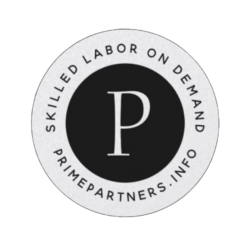Power Distribution Engineer Interview Questions and Answers
Power Distribution Engineer Interview Preparation Guide
Overview of Required and Recommended Certifications, Educational Background, and Industry Qualifications
To excel as a Power Distribution Engineer, candidates should focus on a blend of educational credentials, certifications, and industry-specific qualifications. Here’s a structured overview:
-
Educational Background:
- Required: Bachelor’s degree in Electrical Engineering or a closely related field.
- Recommended: Master’s degree in Power Systems Engineering or Electrical Engineering for advanced roles and deeper technical expertise.
-
Certifications:
- Professional Engineer (PE) License: Often required for higher-level positions, especially those involving public safety.
- Certified Energy Manager (CEM): Useful for candidates focusing on energy efficiency and sustainable practices.
- IEEE Power & Energy Society Certifications: Such as the Certified Power Systems Professional (CPSP) or Grid Modernization Professional (GMP).
-
Industry Qualifications:
- Experience with Power Distribution Systems: Practical experience in designing, maintaining, or operating power distribution networks.
- Familiarity with Industry Software: Such as AutoCAD, ETAP, and PowerWorld for modeling and analysis.
- Knowledge of Regulatory Standards: Understanding of NERC, FERC, and IEEE standards and compliance requirements.
Interview Questions and Answers
Technical Questions
-
What are the key components of a power distribution system, and how do they function together?
Answer:
- Components: The main components include transformers, distribution lines, substations, circuit breakers, and protective devices.
- Functionality:
- Transformers: Step down high transmission voltages to suitable levels for distribution.
- Distribution Lines: Carry electricity from substations to consumers.
- Substations: Serve as nodes that transform voltage levels and distribute power.
- Circuit Breakers and Protective Devices: Ensure safety and reliability by disconnecting parts of the system during faults.
- Example: In a city grid, the substation transforms 132 kV to 33 kV for local distribution, and further to 11 kV for neighborhood distribution. Protective devices at each stage ensure fault isolation, maintaining service continuity.
- Best Practices: Ensure regular maintenance and adhere to standards for each component to minimize downtime.
- Common Pitfalls: Overloading transformers and failing to coordinate protective devices can lead to widespread outages.
-
Explain the significance of load flow analysis in power distribution.
Answer:
- Purpose: Load flow analysis helps in determining the voltage, current, active, and reactive power flows in a power system under steady-state conditions.
- Applications: Used for planning, operation, and optimization of power systems, ensuring efficient and reliable electricity delivery.
- Example: During peak demand, load flow analysis can identify potential overloads and suggest network reconfiguration to prevent it.
- Tools: Software like ETAP and PowerWorld are commonly used for these analyses.
- Common Pitfalls: Ignoring real-time data can lead to inaccurate predictions. Always use updated network models.
- Follow-Up Points: Discuss how load flow analysis integrates with SCADA systems for real-time monitoring and control.
Behavioral Questions
-
Describe a time when you had to work with a difficult team member on a project. How did you handle the situation?
Answer:
- Situation: During a substation upgrade project, one team member consistently missed deadlines, affecting the project schedule.
- Action: I initiated a one-on-one conversation to understand any challenges they were facing and offered support in task prioritization.
- Outcome: By redistributing workload and setting clear deadlines, we improved team efficiency and completed the project on time.
- Best Practices: Open communication and empathy are key to resolving interpersonal conflicts.
- What Not To Do: Avoid confronting the individual publicly or ignoring the issue, which could exacerbate team tensions.
-
Give an example of a time you had to make a quick decision under pressure.
Answer:
- Situation: During a power outage caused by a storm, immediate action was needed to restore service.
- Action: I quickly assessed the situation using SCADA data, coordinated with field teams to locate the fault, and rerouted power through alternate lines.
- Outcome: Power was restored to 80% of affected areas within two hours, minimizing downtime.
- Best Practices: Stay calm, rely on data, and communicate clearly with all stakeholders.
- Common Pitfalls: Avoid making assumptions without data; ensure decisions are based on reliable information.
Situational Questions
-
How would you handle a situation where a new regulatory standard is introduced that impacts your current projects?
Answer:
- Approach:
- Assessment: Review the new standard in detail to understand its implications on existing projects.
- Adaptation: Develop an action plan to integrate compliance requirements, prioritizing critical changes.
- Communication: Inform stakeholders of the changes and their impact on timelines and costs.
- Example: When a new environmental regulation required reduced emissions, I led a team to implement more efficient transformers and re-evaluate our energy management strategies.
- Outcome: Compliance was achieved ahead of schedule, enhancing our company’s reputation for environmental responsibility.
- Best Practices: Stay informed about regulatory changes and maintain flexibility in project planning.
- Follow-Up Points: Discuss how you ensure ongoing compliance through continuous monitoring and updates.
- Approach:
-
What would you do if you discovered a safety violation that could potentially lead to equipment failure?
Answer:
- Immediate Action: Report the violation to the safety officer and halt operations in the affected area if necessary.
- Investigation: Conduct a thorough investigation to determine the root cause and extent of the violation.
- Rectification: Implement corrective actions to address the violation and prevent recurrence.
- Example: Upon discovering improper grounding in a substation, I coordinated with the maintenance team to rectify the issue and conducted training to prevent future occurrences.
- Outcome: The rectification prevented potential equipment damage and improved overall safety compliance.
- Best Practices: Foster a safety-first culture and encourage employees to report violations without fear of repercussions.
- Common Pitfalls: Avoid delaying action or underestimating the severity of safety violations.
Problem-Solving Questions
-
How would you approach a situation where a critical piece of equipment fails during peak demand?
Answer:
- Diagnosis: Quickly diagnose the issue using SCADA and field reports to identify the faulty equipment.
- Mitigation: Implement contingency plans such as load shedding or rerouting power from alternative sources.
- Resolution: Coordinate with maintenance teams for rapid repair or replacement of the failed equipment.
- Example: When a transformer failed during a heatwave, we rerouted power from neighboring substations and expedited transformer replacement.
- Outcome: Service was maintained with minimal disruption, and lessons learned were documented for future reference.
- Best Practices: Regularly update and test contingency plans to ensure readiness.
- Common Pitfalls: Avoid single points of failure in network design; redundancy is key.
-
Describe a complex problem you solved in a previous role and the approach you took.
Answer:
- Problem: Our distribution network was experiencing frequent outages due to aging infrastructure.
- Approach:
- Analysis: Conducted a comprehensive audit to identify weak points and prioritize upgrades.
- Planning: Developed a phased upgrade plan, balancing cost, impact, and urgency.
- Implementation: Coordinated with cross-functional teams for seamless execution.
- Example: By replacing outdated equipment and optimizing load distribution, we reduced outages by 40% within a year.
- Outcome: Enhanced reliability and customer satisfaction, and the project was completed under budget.
- Best Practices: Use data-driven decision-making and involve stakeholders in planning.
- What Not To Do: Avoid reactive approaches; proactive planning is more effective.
Conclusion
Preparing for a Power Distribution Engineer interview involves a comprehensive understanding of both technical and interpersonal skills. By focusing on the outlined areas and leveraging the detailed answers provided, candidates can confidently demonstrate their expertise, problem-solving capabilities, and adaptability in various scenarios. Remember to tailor your responses to highlight your unique experiences and insights, reinforcing your qualifications for the role.
More Critical Power & Backup Systems Interview Guides
Explore more interview guides for Data Center positions.
Data Center Electrician Interview Help
The Data Center Electrician Interview Help guide equips job seekers with essential knowledge and strategies to excel ...
Power Distribution Engineer Interview Questions and Answers
This guide provides job seekers with a comprehensive list of Power Distribution Engineer interview questions and answ...
UPS Technician Interview Guide
The UPS Technician Interview Guide equips job seekers with essential insights and strategies to excel in interviews f...
Generator Technician Interview Help
The Generator Technician Interview Help guide equips job seekers with essential knowledge and skills to excel in inte...
Backup Power Specialist Interview Guide
The Backup Power Specialist Interview Guide equips job seekers with essential insights and strategies to excel in int...
Recent Articles
Check out more articles from Best Electrician Jobs about getting hired inthe electrical industry.
Best Job Board for Electricians
Discover the best job board for electricians! Boost your career with insights on salaries, training, and growth!
Improve Your Electrician Job Postings for More Applicants
Discover how to improve your electrician job postings for more applicants! Boost your career with insights on salarie...
What is the Highest Paying Electrician Role?
Discover the highest paying electrician roles and how to prepare for them. Learn about the skills and certifications ...
Industrial Electrician Careers in California
From manufacturing plants to data centers, industrial electricians play a vital role in California's economy. Discove...
Security Technician Interview Questions and Answers
Security technicians are essential in protecting our modern world. Learn what to expect in your Security Technician i...
Featured Jobs
-

- Company
- Prime Partners
- Title and Location
- Cable Technician
- Wyoming, MI
- Employment Type
- FULL_TIME
- Salary
- $25.16-$32.59/HOUR
- Team and Date
- Commercial
- Posted: 04/17/2025
-

- Company
- Prime Partners
- Title and Location
- Apprentice Electrician
- San Diego, CA
- Employment Type
- FULL_TIME
- Salary
- $24-$37/HOUR
- Team and Date
- Commercial
- Posted: 04/17/2025
-

- Company
- Prime Partners
- Title and Location
- Security Alarm Installer
- Mesa, AZ
- Employment Type
- FULL_TIME
- Salary
- $25.81-$30.68/HOUR
- Team and Date
- Commercial
- Posted: 04/17/2025
-
- Company
- Jackson Healthcare
- Title and Location
- Journeyman Electrician
- Alpharetta, GA
- Employment Type
- FULL_TIME
- Salary
- $30.6-$35.86/HOUR
- Team and Date
- Commercial
- Posted: 04/17/2025
-

- Company
- Prime Partners
- Title and Location
- Journeyman Electrician
- Gilbert, AZ
- Employment Type
- FULL_TIME
- Salary
- $40-$55/HOUR
- Team and Date
- Data Center
- Posted: 04/17/2025
-

- Company
- Prime Partners
- Title and Location
- Voice & Data Technician
- Glendale, AZ
- Employment Type
- FULL_TIME
- Salary
- $23-$35/HOUR
- Team and Date
- Commercial
- Posted: 04/17/2025
Best Electrician Jobs
Ready to get started?
Stop worring about manpower. And get back to what you do best.
Best Electrician Jobs is for Everyone
At Best Electrician Jobs, we are dedicated to fostering an inclusive environment that values diverse perspectives, ideas, and backgrounds. We strive to ensure equal employment opportunities for all applicants and employees. Our commitment is to prevent discrimination based on any protected characteristic, including race, color, ancestry, national origin, religion, creed, age, disability (mental and physical), sex, gender, sexual orientation, gender identity, gender expression, medical condition, genetic information, family care or medical leave status, marital status, domestic partner status, and military and veteran status.
We uphold all characteristics protected by US federal, state, or local laws, as well as the laws of the country or jurisdiction where you work.
 Best Electrician Jobs
Best Electrician Jobs